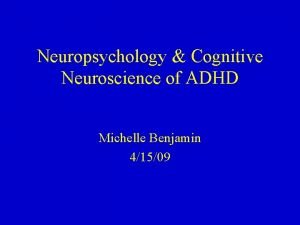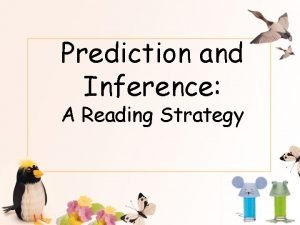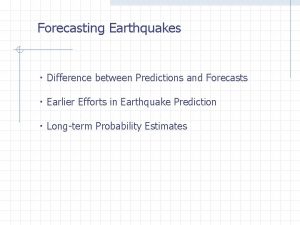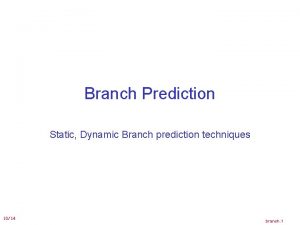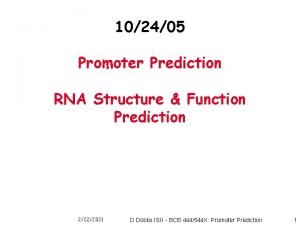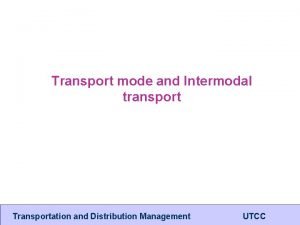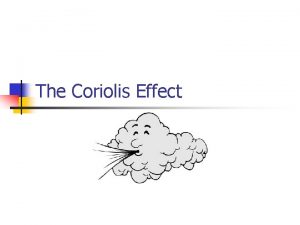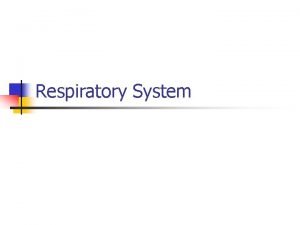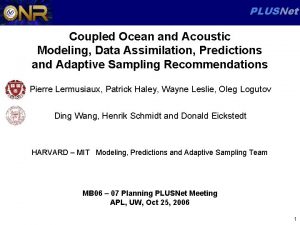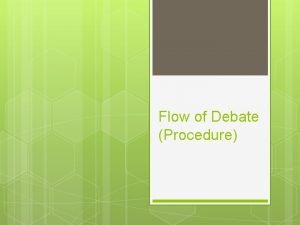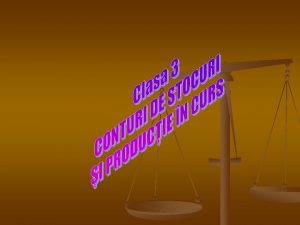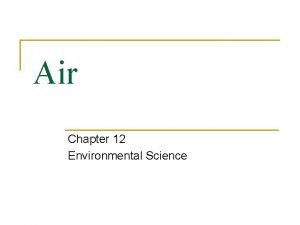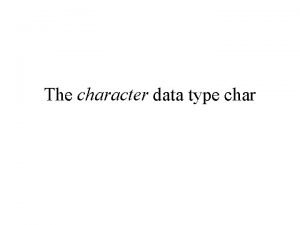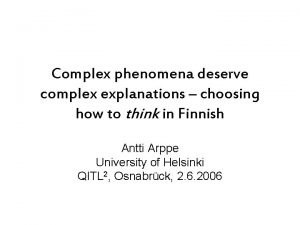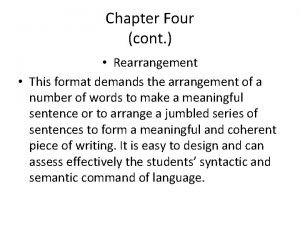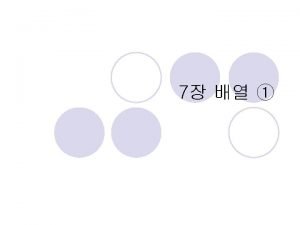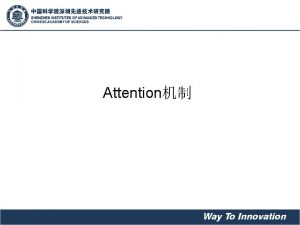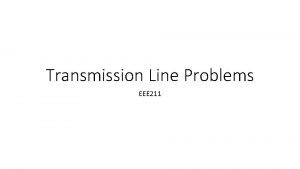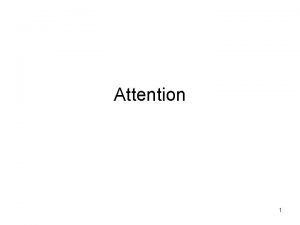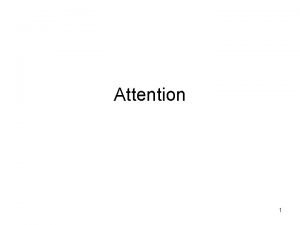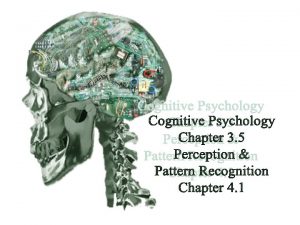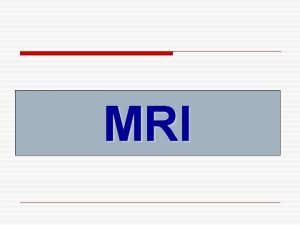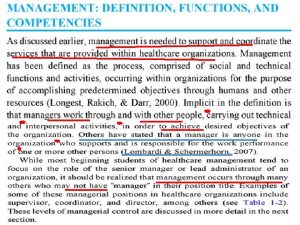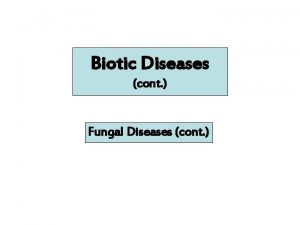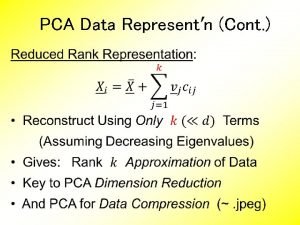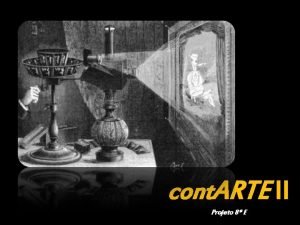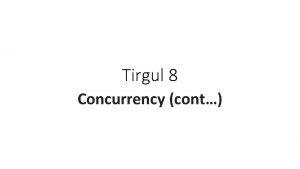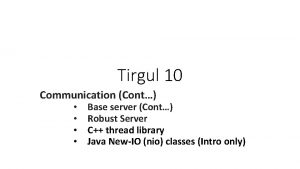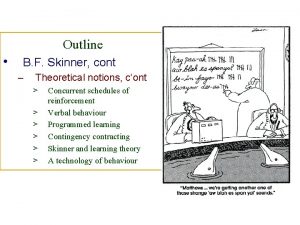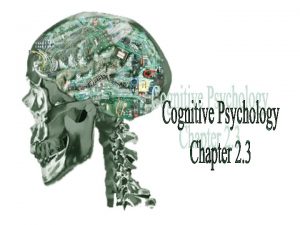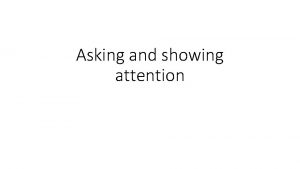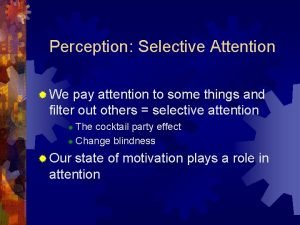Attention prediction and f MRI cont Adaptationf MRI


























- Slides: 26

Attention, prediction and f. MRI (cont. ) Adaptation-f. MRI 1

Class project: due Tues. April 29 th: Just before start of “reading week” How long? • The shorter the better! Max. 6 pages Format? • Front-load the information • 1 st sentence: What Q are you asking? • 2 nd sentence: How are you going to ask it? • 3 rd sentence: Why should the reader care? 2

Class project: due Tues. April 29 th Content? • Show that you have explored to find out what is currently known, what is unknown • Show that you have thought about what an interesting new direction to look would be • Describe in broad terms an expt which would look in that direction • State an explicit hypothesis • Describe explicitly how the data will test that hypothesis Give elevator pitch? 3

Prediction and prediction errors http: //www. scholarpedia. org/a rticle/Reward_signals 4

Predictive coding Subtract expectations from bottom-up input Helmholtz, Mumford, Rao & Ballard, Friston Jehee & Ballard (2009) 5

Top-down enhancement Kastner et al. (1999) 6

Attention within a receptive field: Moran & Desimone (1985) Figure from http: //kybele. psych. cornell. edu/~edelman/Psych 4320/week-2. html 7

Trying to pull apart attention and expectation Kok et al. 2012 8

Trying to pull apart attention and expectation: predictions Kok et al. 2012 9

Trying to pull apart attention and expectation: results Kok et al. 2012 10

Top-down feedback of information: Decoding the yellow of a gray banana Bannert & Bartels, 2013 11

Top-down feedback of information: Decoding the yellow of a gray banana Bannert & Bartels, 2013 12

Adaptation f. MRI A bit like pattern-based analyses: • Beyond “what lit up” Motivation very similar to that of pattern-based f. MRI • Just because two stimuli produce equally intense local avarge activations, that doesn’t mean that the brain can’t tell the two stimuli apart 13

Distinction between representations is lost: After smoothing, there’s no difference left Kriegeskorte Boynton Raizada Haxby Stimulus A activation pattern Gaussian spatial smoothing to improve signal-to-noise /ra/ Stimulus B activation pattern /la/ Average activation same, but spatial patterns different Smoothed local average activation ends up the same

Key idea: neurons get tired Neurons have a preferred stimulus Repeated presentation of a neuron’s preferred stimulus habituates it (makes it tired) Activation goes down Presentation of something that the neuron counts as different allows it to recover again 15

Adaptation f. MRI as a probe of neural difference-detection (Grill-Spector & Malach) Two stimuli: can neurons tell the difference? A voxel containing neurons that respond to all politicians, irrespective of party A voxel containing some specifically Democratic neurons, and other specifically Republican neurons. Raj eev Raiz ada UW

Responses to individual stimuli do not show whether neurons can tell the difference Different sets of neurons are active within the voxel, but overall f. MRI responses are indistinguishable Raj eev Raiz ada UW

Neural adaptation to repeated stimuli does show the difference: What counts as repetition for neurons in a voxel It’s a politician It’s a Republican Same neurons, adapting: It’s a politician again Raj eev Different, fresh neurons: It’s a Raiz ada Democrat UW

Categorical perception: Not all differences make a difference as speech (Alvin Liberman & colleagues) • Stimuli spread evenly along the /ba/-/da/ continuum • Pure /ba/=1, pure /da/=10, perceptual boundary ~ 5 • Presented as pairs, constant 3 -step distance apart acoustically • 1 -4 and 7 -10 do not cross Raj eev boundary: perceived as same Raiz • 3 -6, 4 -7 do cross boundary, ada perceived as different UW

A brain area is processing the stimuli categorically, and therefore as speech, if activity parallels the subject’s same/diff curve Acoustic difference within each pair is constant (1 -4, 4 -7, 9 -6 etc. ) Phonetic difference depends on whether category Raj boundary is crossed Raizada & (2007) eev Raiz Poldrackada UW

Release from adaptation Activation due to release from adaptation = Extra activation caused by stimulus change = (Response to the two different stimuli paired together) (Response to same stimuli presented without the change) E. g. (1/4 + 4/1) - (1/1 + 4/4) To look for adaptation paralleling same/diff perception Make a contrast weighting each adaptation release value Raj by the subject’s behavioural responses on that part of the eev Raiz same/different curve ada UW

Parallel with infant studies Suppose we measure how long a baby looks at its mother’s face and its father’s face Suppose it looks for equal amounts of time at each parent Does that mean that the baby can’t tell Mom and Dad apart? 22

Infant habituation studies: overall design Johnson, M. H. (2001). Functional brain development in humans. Nature Reviews Neuroscience, 2(7), 475 -483. 23

Infant habituation studies: time-course Turk-Browne, N. B. , Scholl, B. J. , & Chun, M. M. (2008). Babies and brains: habituation in infant cognition and functional neuroimaging. Frontiers in Human Neuroscience, 2. 24

Another adaptation-f. MRI example: what counts as different? From Turk-Browne et al. , (2008), adapted from Kourtzi & Kanwisher (2001) 25

Another adaptation-f. MRI example: tuning, and what counts as different Malach, R. (2012). Targeting the functional properties of cortical neurons using f. MR-adaptation. Neuroimage, 62(2), 1163 -1169. 26
 Cont or cont'd
Cont or cont'd Cont or cont'd
Cont or cont'd Alternating attention vs divided attention
Alternating attention vs divided attention Make a prediction about kenny and franchesca
Make a prediction about kenny and franchesca Prediction reading strategy
Prediction reading strategy Prairie and arctic storm prediction centre
Prairie and arctic storm prediction centre Difference between prediction and forecasting
Difference between prediction and forecasting Difference between static and dynamic branch prediction
Difference between static and dynamic branch prediction Gene prediction in prokaryotes and eukaryotes
Gene prediction in prokaryotes and eukaryotes Intermodal equipment logistics
Intermodal equipment logistics Un cont
Un cont Cont'n air
Cont'n air Cont'n air
Cont'n air Plusnet cont
Plusnet cont Flow of a debate
Flow of a debate 301 cont
301 cont Celtic cont
Celtic cont Cont’n air
Cont’n air Character literal
Character literal Cerere inchidere cont first bank
Cerere inchidere cont first bank Header nav section article aside footer
Header nav section article aside footer Cont'd meaning
Cont'd meaning Four cont
Four cont Fungsi sistem file
Fungsi sistem file Cont par thor jelentése
Cont par thor jelentése Decathlon nc
Decathlon nc Java
Java


